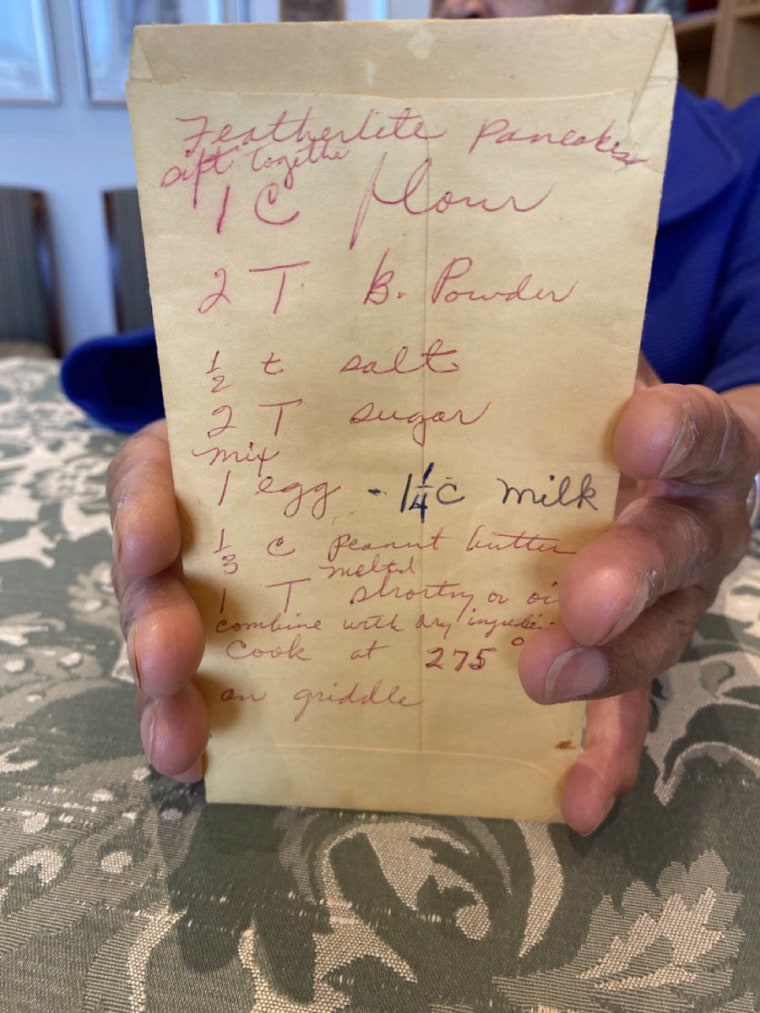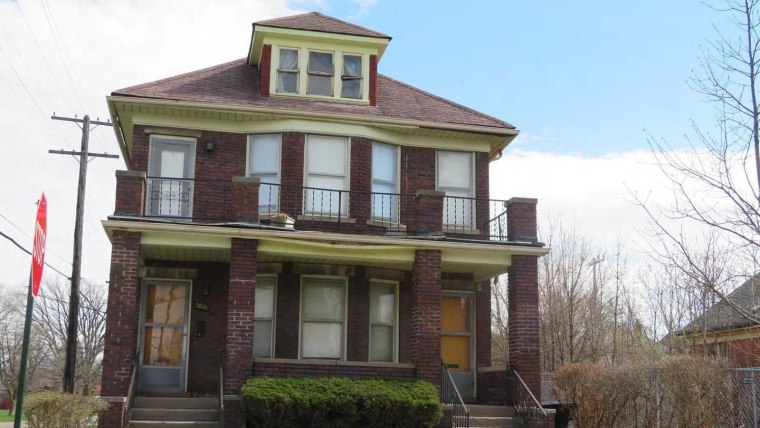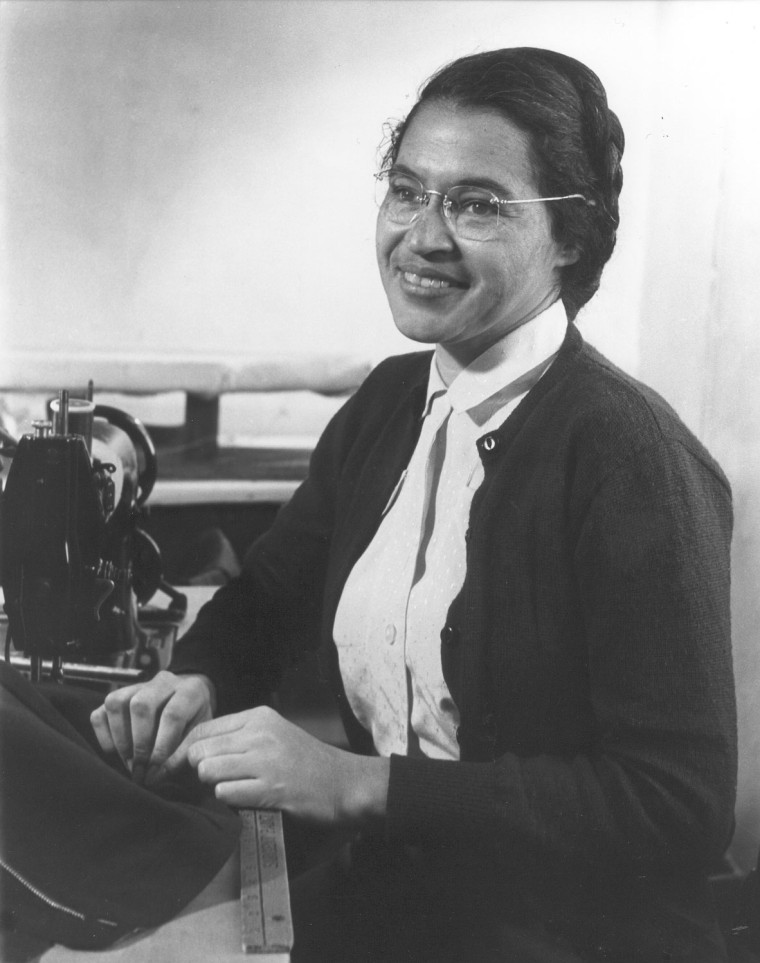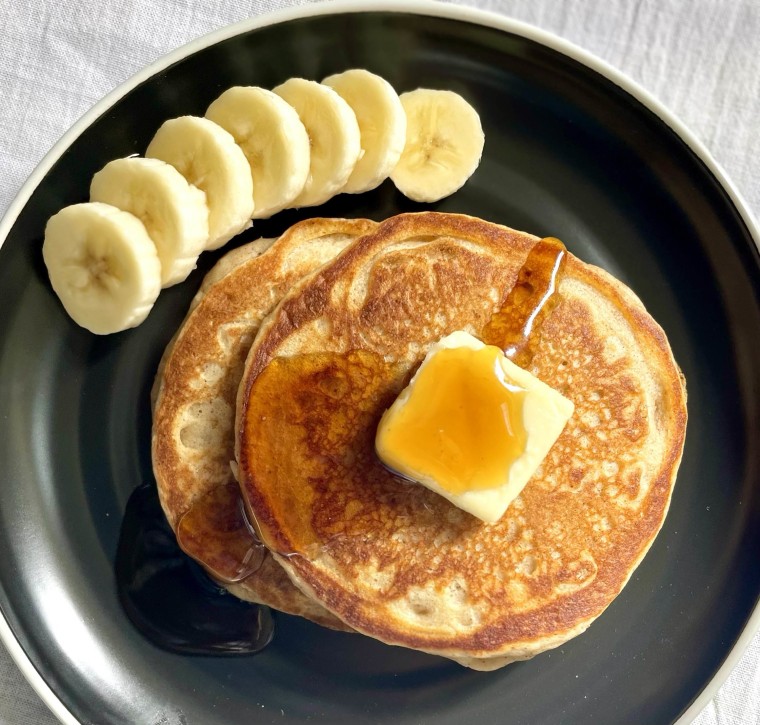The Library of Congress recently posted a photo from its collection that at first glance might seem unlikely to cause a stir: a brief, handwritten recipe on the back of a yellowed envelope with a couple of afterthoughts noted in a different color of ink.
It’s an unusual recipe, to be sure: The list of items for “Featherlite Pancakes” includes peanut butter and triple the usual amount of baking powder — but the ingredient that makes this document truly special is the writer. That handwriting on the back of a First Independence National Bank of Detroit envelope belongs to one of the founding members of the Civil Rights Movement: Rosa Parks.

Manuscript Specialist Adrienne Cannon tells me that the Rosa Parks Papers collection was gifted to the Library of Congress in 2016 by the Howard G. Buffett Foundation. Kept in a controlled environment in “the stacks,” it consists of about 10,000 items — family history, personal correspondence, writing fragments, financial records, photos and books inscribed to her from the likes of Martin Luther King Jr., and “Roots” author Alex Haley, who called her “the mother of us all.”
There is a detailed carpool notebook that tracked ride-sharing organized by church and boycott leaders to help the Black community get to work during the Montgomery Bus Boycott, and the highest civilian honors given by the executive and legislative branches of the federal government, the Presidential Medal of Freedom awarded to her in 1996 by President Bill Clinton and the Congressional Gold Medal bestowed in 1999.
And among all those accolades and historic documents, there is the pancake recipe.
“This is the only recipe (in the collection),” Cannon says. “We don’t know the origin of it or exactly when she may have jotted it down, but we do know it was written on the back of a bank envelope, the First Independence National Bank of Detroit … She moved there with her husband Raymond Parks and her mother Leona McCauley in August of 1957.”

Donna M. Beisel, Director of Museum Operations at the Rosa Parks Museum at Troy University in Montgomery, Alabama tells me it was perhaps not a coincidence that Parks was known to love the peanut butter she put in this recipe, because she was born at the Tuskegee Institute where George Washington Carver helped develop peanuts into a crop that rivaled cotton in the South.
Beisel also explained the reason for the move from there to Detroit; it was because Parks paid a heavy price for her work in the furtherance of justice. Both seamstress Rosa and barber Raymond Parks lost their jobs as a result of the protest, and they were the targets of continual threats and harassment. After their neighbor and boycott leader Robert Graetz’s house was bombed for the second time, Rosa’s brother Sylvester succeeded in convincing them to move near him in Michigan.

Though the move was rooted in danger and hardship, it meant Sylvester’s daughter Sheila McCauley Keys grew up basking in the love of her Auntie Rosa. Although she could be stern when keeping the nieces and nephews in line, Keys remembers her aunt as a precise and dignified person with a certain lightness about her.
“We would go to her house on Sundays or they would come to our house, and we’d have Sunday dinner. We loved going to her house because it always smelled so good. I remember (Auntie Rosa, her mother and my mother) cooking together in front of that big heavy sink from the ’50s. They would shoo us out of the kitchen, but I remember I could see their legs and they had on aprons. Grandma would be humming. Auntie Rosa just seemed to float around the house, she was so light.”
Does Keys remember the pancakes?
“Well, I had never tasted the ones with the peanut butter until they cooked them at a school event in Pennsylvania, but she would make us pancakes. They were nice, petite pancakes, not like the big stacks you see now. You’d get two and you might get a dollop of apple butter, and we thought that was the best treat.”
“Auntie Rosa was very patient,” says Keys, “and in that kitchen experimenting.”
What makes this recipe so compelling is that it’s a snapshot from the regular life of a titan of civil rights, a reminder that such monumental work was done by the same hands that mixed batter for her family on a Sunday morning.
As for that wider influence, Keys says most media reports have gotten some important details wrong. She recounts a story also told in her book, according to the way her Auntie Rosa told it to her: Although the bus is almost universally described as “crowded” in accounts of the events leading to Parks’ arrest, there were open seats in the “whites only” section. A white man sat in the last row of the forward section not because it was the only seat left, but because he wanted to make the people seated behind move, and he laughed when the bus driver ordered Parks and three others farther back. This was not so that the passenger would have a seat, Keys says, but so there would be physical space left between the seating sections as required by the Jim Crow laws of the time.
Parks also told her niece that it wasn’t her first negative encounter with a bus driver, that they often spoke rudely or used slurs towards Black passengers, and that this particular driver, James Blake, had more than once waited for her to pay the fare at the front and then driven off before she could board at the back as required. Parks believed that Blake knew she was in the NAACP, and he was making it clear he didn’t like it.
Keys also shares that although most accounts say that Parks refused to move because she was tired after a long day at her department store job, in reality, Parks described being mentally tired of enduring a lifetime of disrespect and harassment, along with her community. There were actually two teen women who had refused to move and been arrested in recent weeks, but it was Parks’ refusal that galvanized the larger protest, because she was of impeccable character, a distinguished woman in her forties who could not so easily be brushed off as a brash youngster.
It was in the context of hearing about all of those things that I tried making Parks’ Featherlite Pancakes. I love trying out vintage recipes for a lot of reasons, but mostly because the history of food has all of human history inside of it, from the smallest of scales to the largest. I found that the small-scale precision Keys mentioned is evident in the temperature of the griddle Parks specified. They rise quite high because of all the baking powder, so setting the temperature at 275 F (about 100 degrees lower than usual for pancakes) keeps them from burning before they cook through. They also rise best if you keep them “petite” the way she did, and make about eight 4-inch pancakes per batch.

I also thought about the large scale, recalling the item Cannon tells us was her favorite in the Library of Congress collection: Parks’ immersive and painfully poetic handwritten account of her arrest and incarceration for what is usually phrased as refusing to give up her seat for a white passenger. One might more accurately say it was for keeping the seat to which she was constitutionally entitled as a human being, for bravely and in service to others taking her rightful place in the world, in pursuit of a daily life of dignity and peace.
Are they the best, most delicious, fluffiest pancakes I’ve ever made at home? Well, yes, but that’s beside the point this time. I almost always have some little thing I would change when I make a recipe — less this, more that — but that’s not what this article is about. It’s about her: her vision, her life, her legacy. All of those things are in these pancakes, and each of us would do well to remember that, just exactly the way she laid it down.
Rosa Parks’ Featherlite Pancake Recipe
Ingredients
- 1 cup flour
- 1 tablespoon baking powder
- 1/2 teaspoon salt
- 2 tablespoons sugar
- 1 egg
- 1 ¼ cup milk
- 1/3 cup peanut butter
- 1 tablespoon melted shortening or oil
Method
Sift dry ingredients together. Mix wet ingredients together. Combine wet and dry ingredients. Cook at 275 F on griddle.